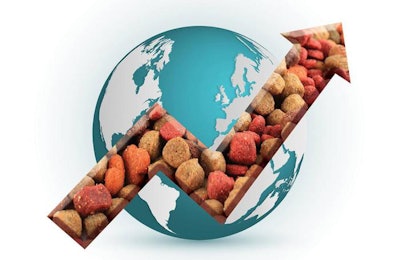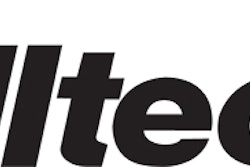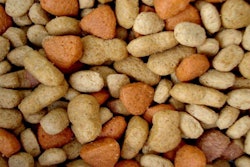
In the last several years, as the global pet food market has continued to recover alongside the economy, the majority of the industry has seen slow but steady growth. According to recent GfK analysis, global pet food retail sales grew 4% in 2015, to a total of roughly US$70 billion. Alltech reported, in its annual global feed survey, that worldwide dry pet food volume reached 22.59 million metric tons, a 4% increase over 2014 (pet food comes in at 2% of total global feed tonnage, according to Alltech’s report).
Given these big-picture numbers, it’s no surprise that most regional markets saw individual growth, as well. In North America, according to GfK, Canada’s pet food market reached US$3 billion, while the US market hit US$24 billion (see Figure 1). Europe’s combined pet food market grew to US$20 billion, and Brazil’s market saw growth to US$5 billion. More developing markets also fared well in 2015: South Africa grew to US$300 million and India expanded to US$200 million. According to GfK, Russia’s market reached US$1.5 billion in 2015; however, that number doesn’t match up with the latest reported by Russia’s state statistical service (Rostat) and Federal Customs Service, which has 2015 pet food sales at US$940 million—a decline from 2014.

According to GfK data, the majority of pet food markets (barring Japan, which held steady) saw growth in 2015—all pieces of a US$70 billion whole.
In terms of dry pet food tonnage, North America produced the most—8.91 million metric tons in 2015, according to Alltech. Europe and Latin America contributed similar amounts to the overall volume, 5.95 and 5.30 million metric tons, respectively. Asia Pacific produced 2.09 million metric tons of dry pet food, while Africa produced 0.35 million metric tons. The top 10 countries for dry pet food production in 2015, then, are what might be expected: the US comes in at the top by a significant margin, having produced 8.451 million metric tons of dry pet food (see Table 1). Brazil comes in at a distant second, with 2.43 million metric tons produced in 2015, and France is the last to break the 1 million mark at 1.245 million metric tons of dry pet food produced.

Unsurprisingly, the US dominates when it comes to dry pet food production. Brazil and France also number in the millions of metric tons, while countries like Russia, Poland, Argentina and Germany round out the bottom four spots in the top 10 at around half a million metric tons of dry pet food produced.
Global pet food trends: dry food and chicken formulas
Dog food, by far, continues to make up the majority of global pet food sales, according to GfK data. In the US, dog food is 78% of the dog food/cat food sales split. In Great Britain, the split is 75%/25% in favor of dog food. And in the Czech Republic and South Africa, the percentages are even higher in dog food’s favor: 87% and 81%, respectively.
In terms of food type, dry pet food holds a majority stake in all markets, even when held up against wet food and pet treats together (see Figure 2). In the US, 68% of pet foods sold are dry, while 20% are wet foods and 11% are treats, according to GfK data. In both France and the Czech Republic, a full 90% of pet food sold is dry, while in Greece that number is even higher—93% dry food, 5% wet food and 2% treats.

Dry pet food is far outstripping wet food and treats combined when it comes to value in the global pet food market.
In terms of flavors, chicken is the most popular flavor globally—in fact, universally, chicken is the most popular flavor for dry dog food, and is very nearly the same for dry cat food. Chicken and beef flavors come out about evenly for wet dog food, while chicken, beef and fish all serve as popular wet cat food flavors. While most countries have a fair mix of flavors that trade off popularity depending on what kind of food is being sought after, the US claims chicken as its most popular flavor across the board, according to GfK.
Japan: the second-largest pet food market
While Japan’s 2015 sales of US$6 billion (according to GfK data; Euromonitor International puts the country’s pet food sales at a smaller US$4.8 billion) make it the second-largest pet food market in the world, Japan’s pet food sales are showing little, if any, growth compared to other markets. In fact, the CAGR (compound annual growth rate) for Japan’s overall pet care market between 2010 and 2015 was only 0.4%, according to Euromonitor data. This in spite of the more than 20 million pet dogs and cats living in the country (a higher number than the 16.6 million children who live there).
Both dry and wet dog food lost market share in Japan between 2010 and 2015, even though dry dog food remains the country’s largest pet food segment (wet dog food is the smallest of the pet food segments there). Dry and wet cat food, on the other hand, gained market share—dry cat food is the second-largest pet food segment in Japan, with wet cat food coming in third, according to Euromonitor.
These numbers fall in line with general pet trends in Japan; coupled with an increase in single-person households and an aging population, it’s no wonder that the data is seeing smaller dog breeds and cats rising in popularity. This means more pets overall in the country, but the type and amount of food being purchased is being affected both by the changing nutrition requirements of a dog population trending towards the smaller-sized breeds and the increasing convenience of owning cats in a smaller household.
Overall, of the various Asian pet food markets, Japan is the one expected to see the most stagnation through 2020, according to Euromonitor data. China, the second-largest Asian market, saw a CAGR of nearly 10% in 2010–2015 and is on trend for 7–8% growth through 2020. Taiwan and South Korea, of similar market size, both saw roughly 7% CAGR in the 2010–2015 timespan. Both are hovering around 4% growth expected through 2020, with Taiwan trending slightly higher. In terms of most significant overall growth, India’s developing market is by far the top contender: The country’s pet food market saw 27% growth in 2010–2015, according to Euromonitor, and is looking at a smaller but still significant 13% CAGR through 2020. No other Asian market is expected to break 10% CAGR in the next five years.
A final look
In terms of mature markets, slow and steady would seem to be the news of the day. If there’s continued growth expected, as with the US, it’s low and not on track to shift upwards in the near future. There’s even stagnation in some markets, such as Japan. Developing markets, however, are largely continuing their significant growth—China and India, in particular, are markets to watch. Russia is proving to be an outlier, with its geopolitical and economic woes, but even so it’s still a market to watch.
More on global pet food trends

















